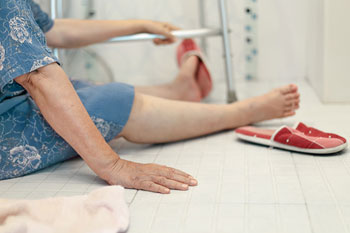Fall Risk Assessment

Falling is a health risk particularly for older adults. In fact, 1/3 of adults over 65 fall annually—with many of these accidents resulting in head injuries, broken bones and, in some cases, fatalities.
Common Risk Factors of Falling
Some of the most common risk factors for falling other than age include:
- Previous Falls
- Foot Pain and Limited Mobility
- Health Conditions Like Arthritis, Diabetes, and Urinary Incontinence
- Unsteady Ankles or Legs
- Impaired Gait Patterns
- Poor Balance
- Improper Footwear
- Obesity
- Visual Impairment
- Poor Muscle Strength
- Certain Combinations of Medicine
- Hazardous Conditions in the Home
How To Prevent Falls
Many risk factors for falling can be reduced by maintaining a healthy weight, exercising to improve muscles and flexibility, reviewing medicine combinations that may cause dizziness, wearing proper shoes, updating eyewear, and fall-proofing the home.
In addition, a podiatrist can provide a comprehensive program to reduce and prevent falls which may include the following:
Fall Risk Assessment. There are various assessments a podiatrist may use, with the common one being the Morse Fall Scale. This assessment evaluates and scores the following variables to categorize the patient as no risk (0-24), low risk (25050), or high risk (>50):
Fall History
Medical Conditions
Ambulatory Aids Used
Intravenous Need
Gait
Mental Status
Orthosis or other Assistive Devices. The podiatrist may prescribe and fit the patient with some sort of a device to improve mobility, or improve joint instability/muscle weakness such as custom orthotics, ankle foot orthosis (AFO), and more.
Strength, Muscle, and Balance Exercises. A fall prevention exercise program will be developed to have a positive affect on balance, strength, power, and flexibility.
Patient Education. A large part of the total fall prevention plan includes practical tips, facts, footwear recommendations and other information to reduce the risk of falls.
Don’t wait until after you fall to have a fall risk assessment. Taking action now can help prevent many falls and give the confidence and tools to stay independent for many years to come.

